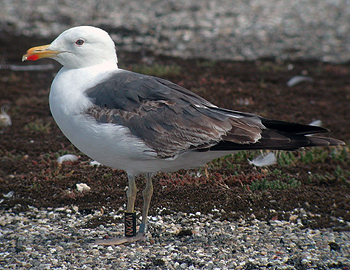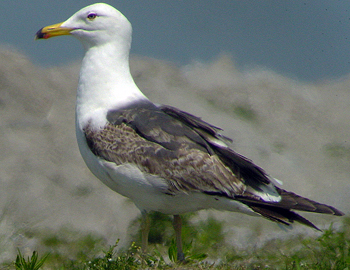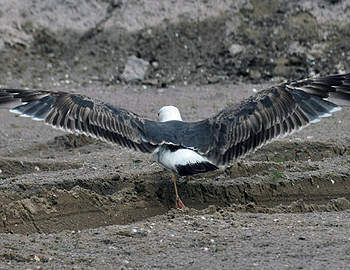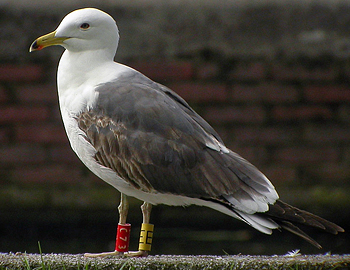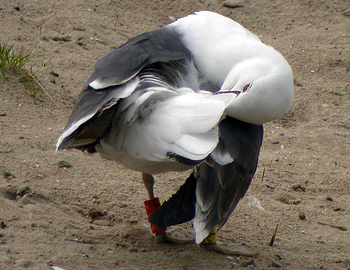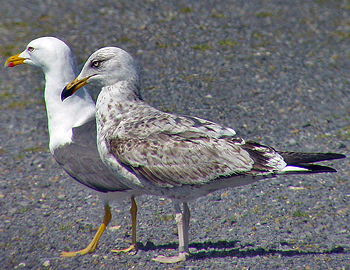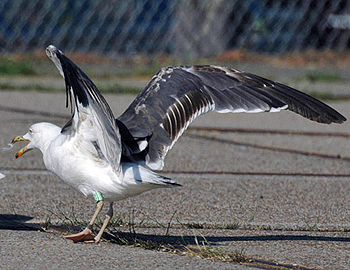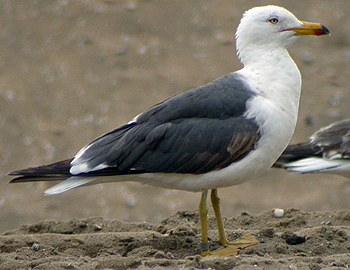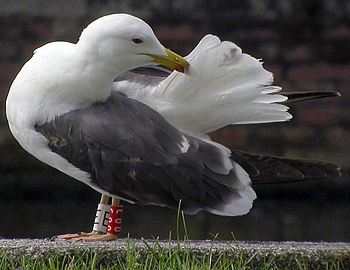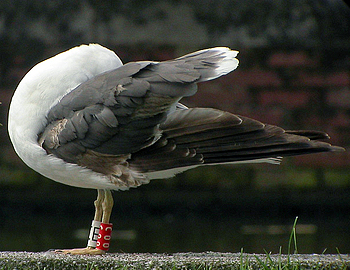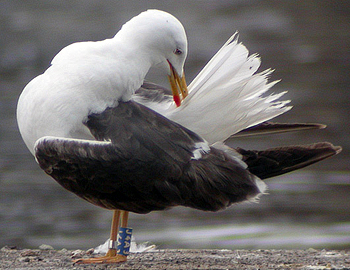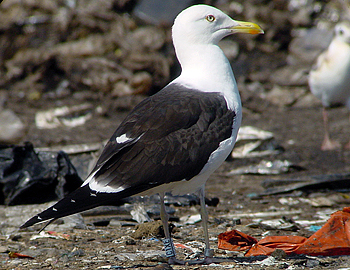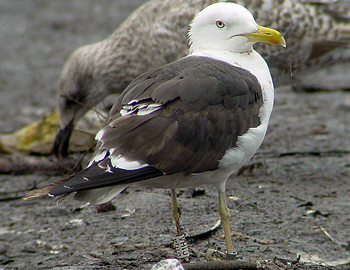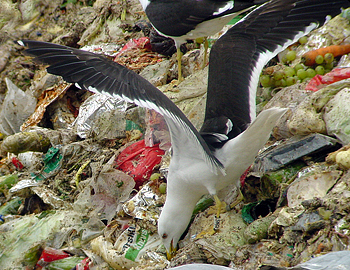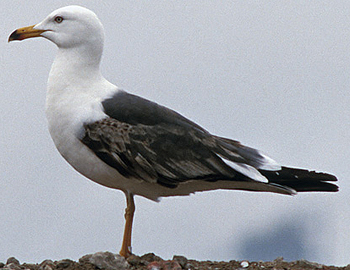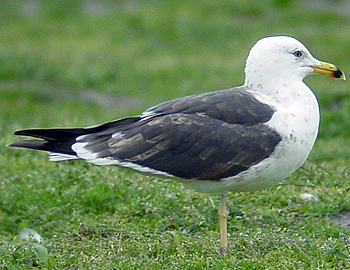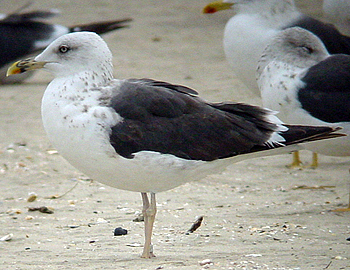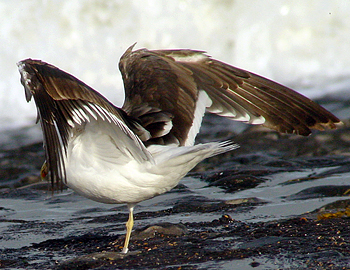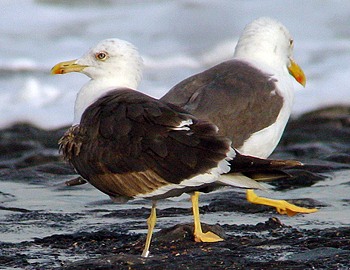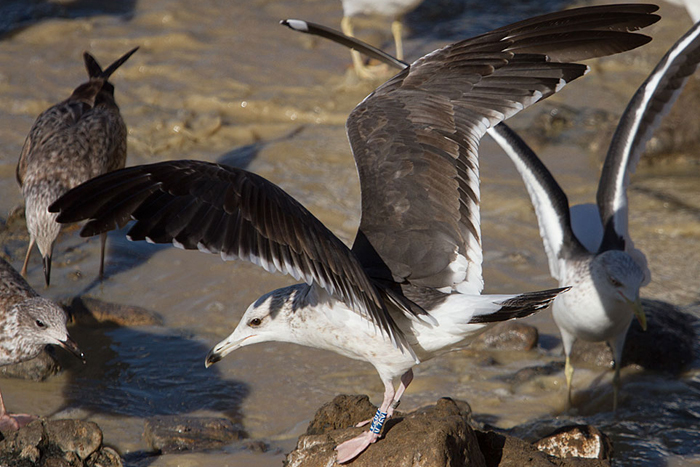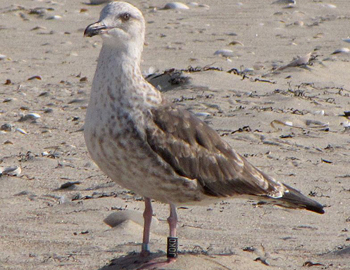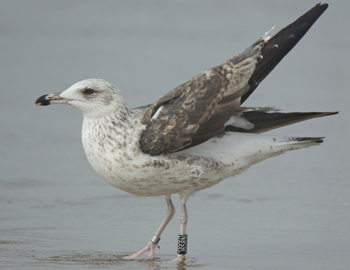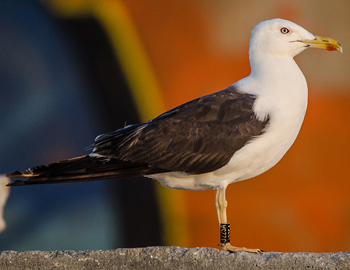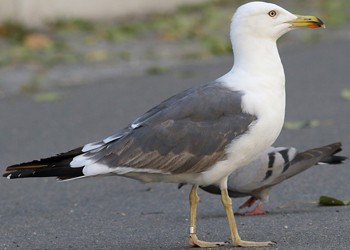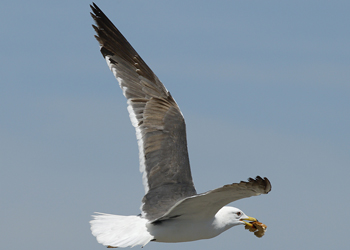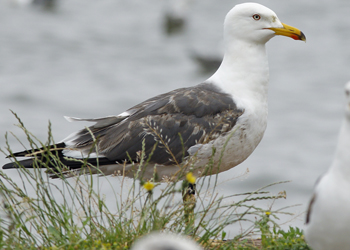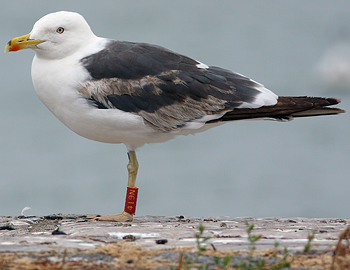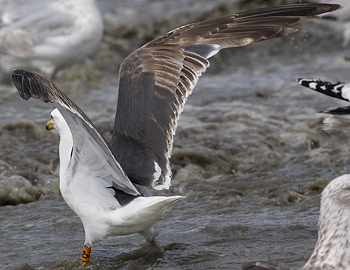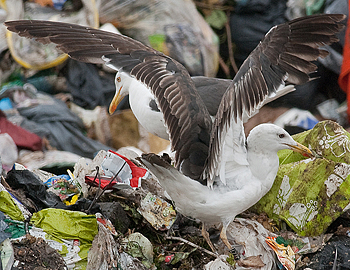 Lesser Black-backed Gull (graellsii & intermedius)
Lesser Black-backed Gull (graellsii & intermedius)
(last update:
lbbg 1cy May
lbbg 1cy June
lbbg 1cy July
lbbg 1cy August
lbbg 1cy September
lbbg 1cy October
lbbg 1cy November
lbbg 1cy December
lbbg 2cy January
lbbg 2cy February
lbbg 2cy March
lbbg 2cy April
lbbg 2cy May
lbbg 2cy June
lbbg 2cy July
lbbg 2cy August
lbbg 2cy September
lbbg 2cy October
lbbg 2cy November
lbbg 2cy December
lbbg 3cy January
lbbg 3cy February
lbbg 3cy March
lbbg 3cy April
lbbg 3cy May
lbbg 3cy June
lbbg 3cy July
lbbg 3cy August
lbbg 3cy September
lbbg 3cy October
lbbg 3cy November
lbbg 3cy December
lbbg sub-ad January
lbbg sub-ad February
lbbg sub-ad March
lbbg sub-ad April
lbbg sub-ad May
lbbg sub-ad June
lbbg sub-ad July
lbbg sub-ad August
lbbg sub-ad Sept
lbbg sub-ad Oct
lbbg sub-ad Nov
lbbg sub-ad Dec
lbbg adult January
lbbg adult February
lbbg adult March
lbbg adult April
lbbg adult May
lbbg adult June
lbbg adult July
lbbg adult August
lbbg adult September
lbbg adult October
lbbg adult November
lbbg adult December
third calendar year: June
Identification update: moult variability in 3rd calendar-year Lesser Black-backed Gulls
- Theo Muusse, Mars Muusse, Bert-Jan Luijendijk and Ruud Altenburg -
IN: Birding World 18: 338-348 (2005).
The Lesser Black-backed Gull Larus fuscus is a polytypic species, comprising at least three subspecies: L. f. fuscus, L. f intermedius and L. f graellsii. The closely related L. [f.] heuglini, whose taxonomic position is not yet entirely clear (for which, see Liebers et al. 2001, Crochet et al. 2002, Llebers & Helbig 2002 and Yesou 2002), is not discussed in this article. The nominate form occurs in the northernmost part of the breeding range of the species and breeds around the White Sea, the Baltic Sea and in northern Norway. The breeding grounds of intermedius, its close relative, are more southerly and westerly and comprise southern and western Norway, western Sweden, Denmark and Germany. The form graellsii is the westernmost taxon and breeds in Greenland, Iceland, the Faeroe Islands, Ireland and Britain, as well as to the south, along the coasts of mainland Europe from the Netherlands south to Iberia. Hereafter, L. f fuscus is referred to simply as fuscus, while the other two taxa are referred to as intermedius and graellsii respectively.
Lars Jonsson, in Birding World (i998), provided the first comprehensive paper on the subspecific identification of Lesser Black-backed Gulls. His article set many gull watchers - including the authors of this follow-up – in motion to study their local Lesser Black-backed Gulls in detail. In the field, we observed aspects of moult in Lesser Black-backed Gulls that seemed to contradict some of Jonsson’s findings (cf Gibbins 2004), indicating that certain aspects of his article needed refinements.
This paper concentrates on the variation in the extent of the winter/spring moult exhibited by third calendar-year (3cy) Lesser Black-backed Gulls that have returned to Europe. It is important to note that it is based primarily on ringed birds of known age and known origin. We have assumed that all ringed birds are examples of the taxon breeding at the ringing locality.
Moult in 3cy Lesser Black-backed Gull
The traditional view used to be that Lesser Black-backed Gulls undergo two distinguishable moults in their third calendar-year:
(1) a ‘partial pre-breeding moult’ in the winter quarters (from January to April) to attain a second-summer plumage and
(2) a ‘complete post-breeding moult’ (from June to October) to acquire a third-winter plumage (Dwight 1925, Glutz von Blotzheim & Bauer 1982, Cramp & Simmons 1983 and Grant 1986).
According to Dwight (1925) and Grant (1986), the ‘partial pre-breeding moult' is restricted to the head and body feathers. Cramp & Simmons (1983) were the first to consider that moult strategies may differ between subspecies and mention that a few specimens of 3cy/4cy fuscus collected during winter and early spring showed obvious signs of primary moult. Jonsson (1998) and Rauste (1999) expanded on this and provided new insights to the plumage renewal in the winter quarters, raising awareness that the term ‘partial pre-breeding moult’ may not fully cover the extent of moult in fuscus (cf Gibbins 2004). When referring to the moult which takes place outside the breeding grounds, we therefore have chosen to apply the more general terms ‘winter/spring mou|t’ or ‘moult on the wintering grounds’ instead of ‘partial pre-breeding moult'.
Lars Jonsson and Visa Rauste commonly encountered 3cy fuscus that had returned to their breeding areas with an obvious discontinuity between fresh inner primaries and old outer primaries. This interrupted moult most commonly occurred at a point in the outer five primaries, and is therefore fairly easily detected in resting birds (Jonsson 1998, Gibbins 2004). We are not aware of any publications addressing the renewal of the secondaries in 3cy fuscus. Recent authors have reached the preliminary agreement that tail feathers are normally at least partially renewed in fuscus (Jonsson 1998, Malling Olsen & Larsson 2004). Jonsson (1998) noted that both 3cy graellsii and intermedius - like fuscus - include rectrices in the moult on the wintering grounds. However, many authors still hold to the traditional view outlined by Dwight (1925) and Grant (1986) that 3cy graellsii and intermedius return to their native areas with retained remiges (Jonsson 1998, Gruber 1999, Malling Olsen & Larsson 2004). However, based on observations of 3cy birds in spring and summer, Muusse et al. (2001), Adriaens (2002), Gibbins (2004) and, to a lesser extent, Stewart (in prep.), concluded that at least some 3cy graellsii and intermedius undergo an extensive moult prior to their northward migration, including their primaries. This has obvious implications if the extent of the moult in winter or spring is to be employed as an identification tool.
Study method
For this paper, we studied returning or returned 3cy Lesser Black-backed Gulls along the North Sea and English Channel coasts (in the Netherlands, Belgium and France) between April and July in the period 2000 to 2005. Forty-six observations were eligible for this study as they involved birds ringed as nestlings within the known breeding ranges of graellsii and intermedius. We also visited Tampere, Finland, in July 2003, where we described 16 3cy individuals ringed as nestlings within the known breeding range of fuscus. We recorded the extent of the moult in the primaries, secondaries and rectrices in all birds observed. To record and assess the extent of this moult, we used binoculars, telescopes and digital cameras. The extent of primary moult was determined by simply establishing the number of newly attained primaries. The extent of the moult in the secondaries and rectrices was recorded by estimating the percentage of renewal within each feather tract. Renewed rectrices and remiges acquired in winter or early spring were identified on the basis of the quality, pattern and colour of a particular feather: retained feathers are typically worn and faded brown, whereas renewed feathers are fresh and often resemble the feathers of the adult in colour and pattern (see accompanying photographs). The term ‘interrupted moult’ is used to refer to the phenomenon by which moult has apparently stopped before the entire plumage has been renewed (Jenni & Winkler 1994).
Results
A total of 62 ringed 3cy Lesser Black-backed Gulls of known age and known origin have been included in this study, and our results are reported using the following four categories:
(1) individuals with old rectrices and old remiges (18 birds)
(2) individuals with renewed rectrices and old remiges (19 birds)
(3) individuals with renewed rectrices, renewed secondaries and old primaries (6 birds)
(4) individuals with renewed rectrices, renewed secondaries and renewed primaries (19 birds).
It should be stressed that this categorisation is solely intended as a tool to present the variation found in the data, and is not intended to imply any fixed physiological or ecological differences between the birds. The data are summarised in Table 1, and examples from each category are illustrated in Plates 1-4 (Category 1), Plates 5-8 (Category 2), Plates 9-12 (Category 3) and Plates 13-20 (Category 4).
The 18 individuals in Category 1 had returned from their wintering grounds without having renewed any rectrices ar remiges. The individuals comprising this least-advanced category, originated from Britain, Belgium and the Netherlands, whose breeding birds we consider as graellsii. Another 19 3cy Lesser Black-backed Gulls returned with a variable number of renewed rectrices, but all the remiges still old. In these Category 2 individuals, the number of replaced tail feathers ranged from one to all, with the latter being the most frequent (observed in seven of the 19 birds). All of these birds had been ringed as nestlings within the breeding range of graellsii (in Belgium and the Netherlands). We observed six birds with renewed rectrices and renewed secondaries, but retained primaries. These Category 3 individuals had replaced at least a large number of their rectrices and were characterised by a low (<25%) to high (75% to <100%) percentage of replaced secondaries, while their primaries had not been replaced since their complete moult during the previous summer. The six individuals assigned to this category were hatched in the Netherlands (four birds) and southern Norway (two birds), thus within the breeding ranges of graellsii and intermedius respectively. The final category represents the most advanced 3cy Lesser Black-backed Gulls. The 19 birds included in this Category 4 were characterised by renewed rectrices, renewed secondaries and renewed primaries. All birds that had replaced their secondaries and primaries also showed an entirely or almost entirely renewed tail. The extent of the renewal of the secondaries varied from about three-quarters of the feathers to the entire feather tract, with the majority (10 out of 19) having attained a full set of renewed secondaries. The most variable aspect was the extent of the primary moult: individuals with a single renewed primary as well as birds with a full set of 10 renewed primaries were recorded. All but one of these birds appeared to have interrupted the primary moult before migrating to their natal areas, and 12 of them exhibited a contrast between the retained old and the newly acquired primaries within the outermost five primaries. Most birds assigned to this category originated from Finland (16), the core breeding area of fuscus. The remaining three individuals came from the Netherlands (1), western Sweden (1) and southern Norway (1), regions inhabited by graellsii (the Netherlands) and interrnedius (western Sweden and southern Norway). Additionally, after July (and thus not included in the category tabulation), we observed three further 3cy Lesser Black-backed Gulls from southern Norway (2) and western Sweden (1) which had renewed primaries, secondaries and rectrices during the previous winter/spring (see Plates 18-20).
taxon |
origin |
cat 1 18 birds |
cat 2 19 birds |
cat 3 6 birds |
cat 4 19 birds |
total |
graellsii |
Britain |
2 |
0 |
0 |
0 |
2 |
Belgium |
6 |
5 |
0 |
0 |
11 |
|
Netherlands |
10 |
14 |
4 |
1 |
29 |
|
total |
18 |
19 |
4 |
1 |
42 |
|
intermedius |
Norway |
0 |
0 |
2 |
1 |
3 |
Sweden |
0 |
0 |
0 |
1 |
1 |
|
total |
0 |
0 |
2 |
2 |
4 |
|
fuscus |
Finland |
0 |
0 |
0 |
16 |
16 |
Table 1. Variation in the extent of the winter/spring moult exhibited by returned 3cy Lesser Black-backed Gulls, sorted by geographical and sub-specific origin. This table has been compiled using the classification defined in the opening paragraph of the Results section.
* Unlike all 20 of the other individuals included in this category, this Dutch bird showed almost entirely retained secondaries (see Plate 16).
Discussion
Our results strongly support the notion that the continuous variation in the extent of moult on the wintering grounds in 3cy Lesser Black-backed Gulls is structured geographically, although not necessarily around currently accepted subspecies boundaries. The least advanced extreme consists of birds that have followed the traditional moult strategy defined by Dwight (1925) and Grant (1986). These ‘classic’ second-summers show both retained remiges and rectrices and comprise a substantial proportion of our observations from the breeding range of graellsii (18 out of 42). At the opposite end of the spectrum, we encounter Lesser Black-backed Gulls that have acquired new rectrices, secondaries and primaries prior to their northward spring migration. This most advanced extreme accommodates all of our 16 observations of 3cy Lesser Black-backed Gulls from the breeding range of fuscus and they perfectly fit the model developed by Jonsson (1998) and Rauste (1999). However, unlike Jonsson (1998), Gruber (1999) and Malling Olsen & Larsson (2004), we found a few equally advanced birds hatched within the breeding ranges of intermedius (two out of 4) and graellsii (one out of 42). Between these extremes, there is a group of birds showing a large variety of intermediate moult stages. Almost half (19 out of 42) of the gulls hatched within the breeding range of graellsii fall into the less advanced half of this intermediate area; i.e. birds which have renewed only a variable number of tail feathers. The other, more advanced half of the middle bracket contains six individuals showing renewed rectrices and secondaries, but fully retained primaries. It is only in this section where we encounter the first two individuals from the breeding range of intermedius, in addition to four birds from Dutch breeding populations.
Considering this pattern, it is obvious that the replacement of remiges and rectrices on the wintering grounds in graellsii and especially intermedius is more variable and extensive than previously assumed. This notion not only contrasts with the traditional view represented by Dwight (1925) and Grant (1986), but is also at odds with the picture drawn by the more recent publications of Jonsson (1998), Gruber (1999) and Malling Olsen & Larsson (2004). Our results fuel the contention raised by Muusse et al. (2001), Adriaens (2002) and Gibbins (2004) who, on the basis of field observations of (mostly unringed) 3cy Lesser Black-backed Gulls, argued that the extent of moult in the winter quarters in graellsii and intermedius is variable and overlaps with that of 3cy fuscus.
The results of our study of ringed birds substantiate the conclusion that all birds with renewed remiges acquired new rectrices too, but birds with old tails also retained their remiges. We also found that all 3cy Lesser Black-backed Gulls with renewed secondaries had also acquired new tail feathers, but had not necessarily replaced any primaries. This pattern is confirmed by substantial observations of unringed 3cy Lesser Black-backed Gulls in the Netherlands in spring (278 birds between 2000 and 2005).
We need to be careful about inferring the sequence in which the feathers may have been replaced in the winter quarters. We have, after all, not witnessed the moult process itself, but only the final results of this process in returning birds observed in northern Europe in spring and summer. Nonetheless, the most obvious scenario would be that moult on the wintering grounds in a 3cy Lesser Black-backed Gull progresses in the following, more or less overlapping and probably simplified, sequence: the rectrices first, followed by the secondaries, and finally the primaries. If so, this sequence is strikingly different to that described for the complete moult of the large gulls of the Northern Hemisphere by Dwight (1901, 1925), Ingolfsson (1970) and Malling Olsen & Larsson (2004). These authors concluded that the complete moult of these particular feather tracts commences with the replacement of the primaries, while the moult of the secondaries and rectrices begins when the primary moult has reached either P5 or P6.
Implications
Regarding the racial identification of Lesser Black-backed Gulls, what are the implications of our findings? Lars Jonsson’s ground-breaking Birding World paper (1998) attempted to secure key characters that enabled him to separate intermedius and graellsii from fuscus at his local gull sites in eastern Sweden. A significant aspect of this paper was that he attributed a vital role to moult characteristics in the sub-specific identification of second-summer Lesser Black-backed Gulls. On page 314, Jonsson stated: ‘I would positively identify a second-summer Lesser Black-backed Gull in May showing predominantly dark wing coverts and very fresh inner six to eight primaries as fuscus’. However, he explicitly warned that his findings needed to be interpreted carefully in a western European context.
Our data demonstrate that 3cy Lesser Black-backed Gulls hatched within the normal breeding range of intermedius (and perhaps graellsii too) can match Jonsson's moult criteria for fuscus. Together with other recent findings regarding moult in second calendar-year Lesser Black-backed Gulls (Altenburg et al in prep., Luijendijk et al. in prep.), our study shows that, as warned by Jonsson (1998), caution is indeed warranted if using moult features in the field identification of suspected out-of-range Lesser Black-backed Gull taxa (cf Howell 2001). It could be argued that the most useful identification tool for identifying a vagrant fuscus in Western Europe might well be the presence of an appropriate ring.
Acknowledgements
This paper is a contribution of the Gull Research Organisation (GRO) in the Netherlands. The authors are grateful to Stichting Ornithologisch Station Voorne, Roland-Jan Buijs, Fred Cottaar, Volker Dierschke, Thord Fransson, Risto Juvaste, Nils Helge Lorentzen, Kjeld Pedersen, Walter Roggeman, Philippe Schepens, David Sowter, Eric Stienen, Kees Verbeek and Jeroen van Waeyenberge for their kind help in tracing the origin of the Lesser Black-backed Gulls included in this study. This work also benefited from exchanges of information and/or pictures with the following gull experts: Peter Adriaens, Markku Kangasniemi, Hannu Koskinen, Visa Rauste, Peter Stewart and Pim Wolf. Particular thanks are due to Chris Gibbins for his valuable suggestions and comments on the manuscript.
References
Adriaens, P. 2002. Some confusing Lesser Black-backed Gulls. surfbirds.com (accessed 1st June 2005).
Barth, E.K. 1968. The circumpolar systematics of Larus argentatus and Larus fuscus, with special reference to the Norwegian population. Nytt. Mag. Zool. 15, Suppl. 1: 1-50.
Cramp, S. & Simmons, K.E.L. 1983. The Birds of the Western Palearctic. Vol. 3. Oxford.
Crochet, P.-A., Lebreton, J.-D. & Bonhomme, F. 2002. Systematics of large white-headed gulls: patterns of mitochondrial DNA variation in western European taxa. Auk 119: 603-620.
Dwight, J. 1901. The sequence of moults and plumages of the Laridae (gulls and terns). Auk 18: 49-63.
Dwight, J. 1925. The gulls (Laridae) of the world: their plumages, moults, variations, relationships and distribution. Bull. Amer. Mus Nat. Hist. 52: 63-402.
Gibbins, C.N. 2004. Is it possible to identify Baltic and Heuglin’s Gulls? Birding Scotland 7: 154-186.
Glutz von Blotzheim, U.N. and Bauer, K.M. 1982. Handbuch der Vogel Mirteleuropas. Bd 8.
Wiesbaden.
Grant, P.J. 1986. Gulls, a guide to identification. 2nd ed. Calton.
Gruber, D. 1999. Identification of juvenile and immature Baltic Gulls. Dutch Birding 21 129-147.
Howell, S.N.G. 2001. A new look at moult in gulls. Alula 7: 2-11.
Ingolfsson, A. 1970. The moult of remiges and rectrices in Great Black-backed Gulls Larus marinus and Glaucous Gulls L. hyperboreus in Iceland. Ibis 5: 83-92.
Jenni, L. & Winkler, R. 1994. Moult and Ageing of European Passerines. London.
Jonsson, L. 1998. Baltic Lesser Black-backed Gull Larus fuscus fuscus - moult, ageing and identification. Birding World 11:295-317.
Liebers, D., Helbig, A.J. & De Knijff, P. 2001. Genetic differentiation and phylogeography of gulls in the Larus cachinnans-fuscus group (Aves: Charadriiforrnes). Molecular Ecology 10:2477-2462.
Liebers, D. & Helbig, A.J. 2002. Phylogeography and colonisation history of Lesser Black-backed Gulls as revealed by mtDNA sequences. Journal of evolutionary Biology 15:1021-1033.
Malling Olsen, K. & Larsson, H. 2004. Gulls of Europe, Asia and North America. London.
Muusse, MJM. Luijendijk, B.-J. and Muusse, T.O.V. 2001-2002. Birdsnap: - Gulls of NW Europe. Formerly accessible on www.birdsnaps.com. Updated 2005 edition distributed
on CD-ROM only.
Rauste, V. 1999. Kennzeichen und Mauser von ‘Baltischen Heringsmowen’ Larus [fuscus] fuscus und 'Tundramowen' L. [fuscus] heuglini. Limicola 13: 105-128 & 153-188.
Stewart, P. (in prep.). The primary moult of the Lesser Black-backed Gull. Severn Estuary Gull Group.
Yésou, P. 2002. Systematics of Larus argentatus-cachinnans-fuscus complex revisited. Dutch Birding 24: 271 -298.
======================================================
In the above bird, coded NLA 5.505.659, an extensive moult on the wintering grounds a few months ago turned the bird in an almost identical plumage as many 4CY birds show in spring and early summer (birds that are one year older than this one). All tertails and secondaries have been replaced for 3rd generation sub-adult feathers, which are largely grey with bold white tips (and a bit of darker shades on the centres). Almost all of the primaries were included in this winter moult as well, except for the outermost feathers (P10 in the right wing and P9-P10 in the left wing). These outer primaries are still old 2nd gen, and in fact the only clue for its true age, if this bird was not ringed as pullus.
After publication of this article in Birding World 2005, we continued gathering information and photographs of returning ringed 3CY birds in spring. Below are a few extra birds from the period April - July.
Below: few images of unringed 3CY Lesser Black-backed Gulls in 1st week of June.
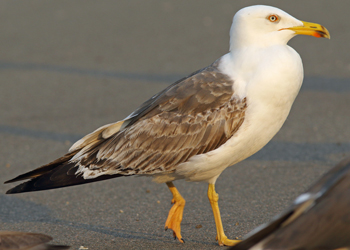 |
 |
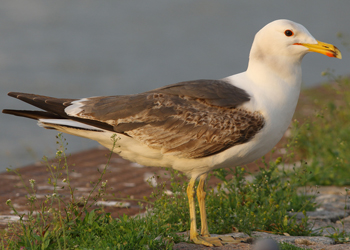 |
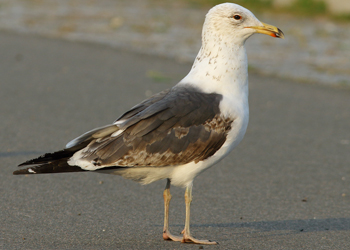 |
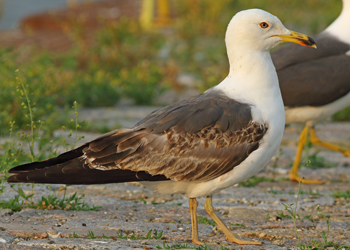 |
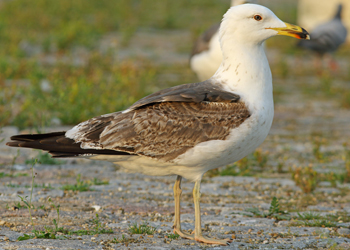 |
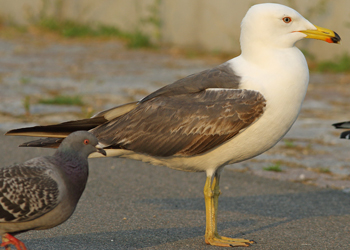 |
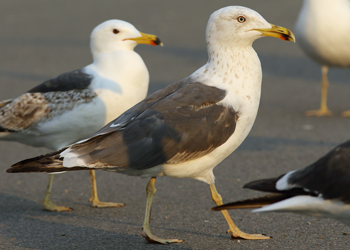 |
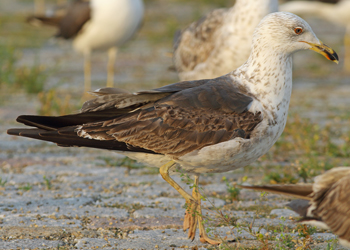 |
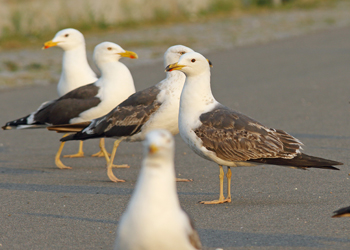 |
Below: few images of unringed 3CY Lesser Black-backed Gulls in 2nd week of June.
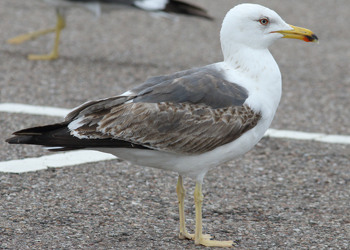 |
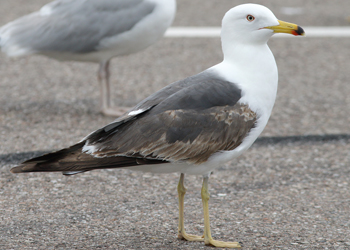 |
 |
 |
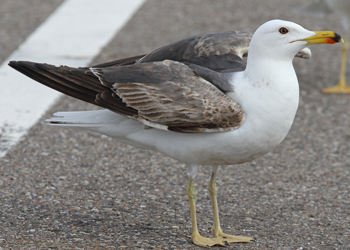 |
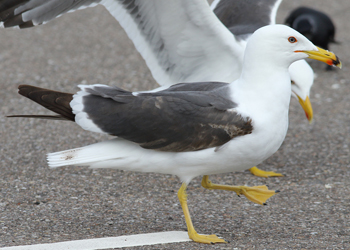 |
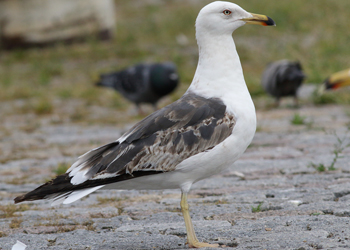 |
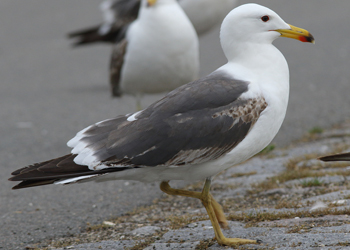 |
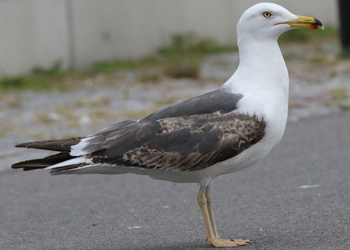 |
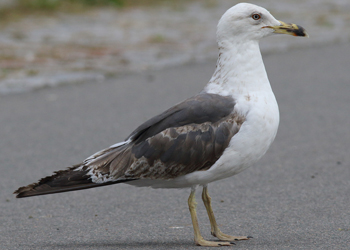 |
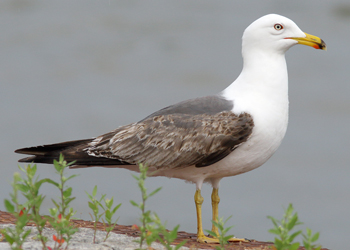 |
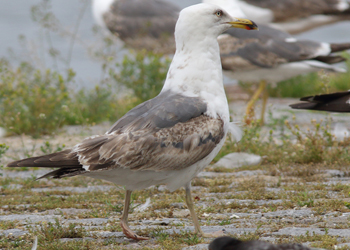 |
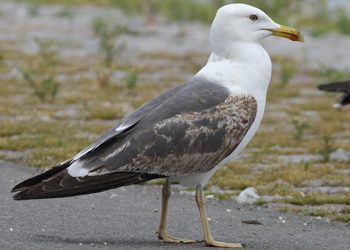 |
 |
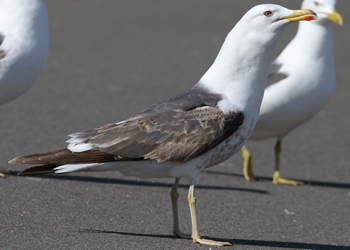 |
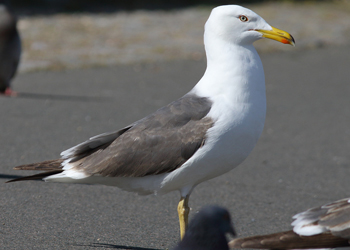 |
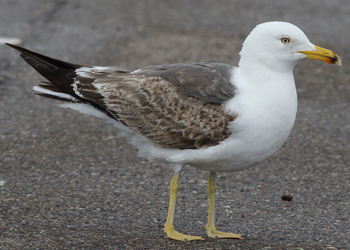 |
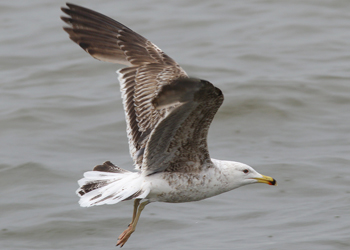 |
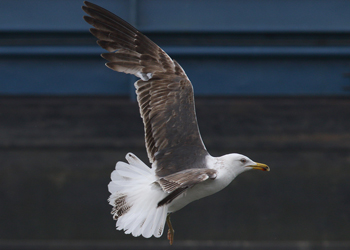 |
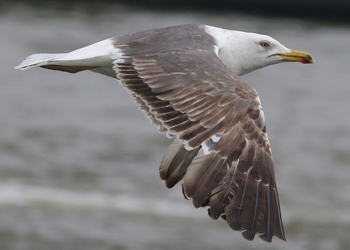 |
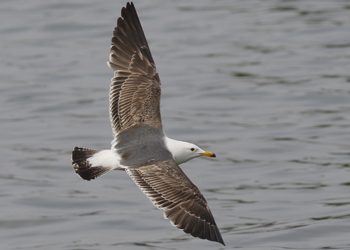 |
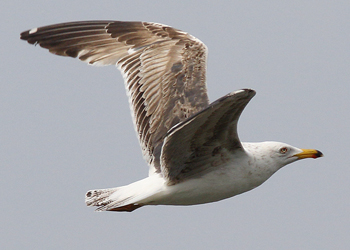 |
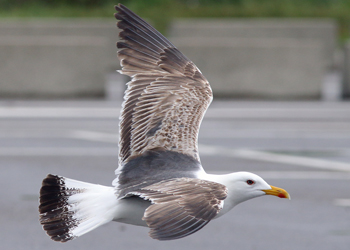 |
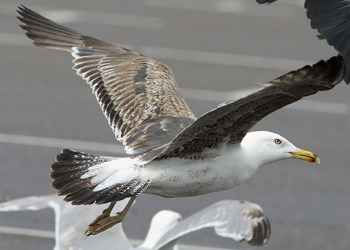 |
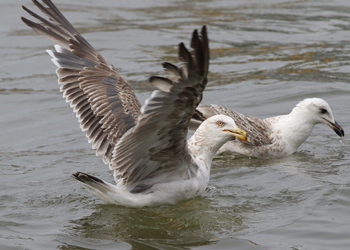 |
 |
 |
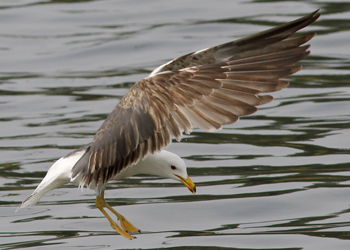 |
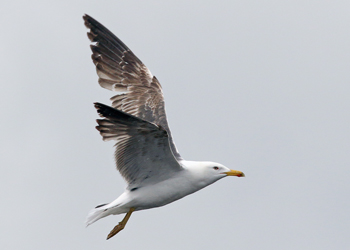 |
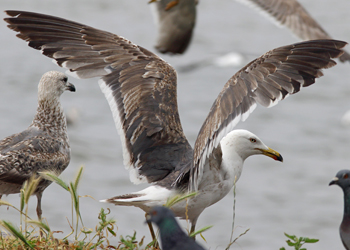 |
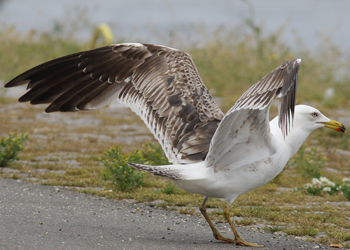 |
 |
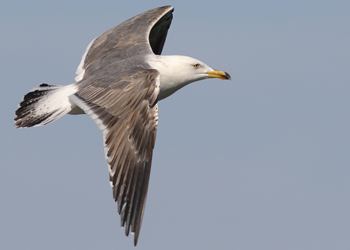 |
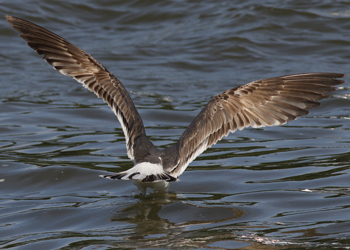 |
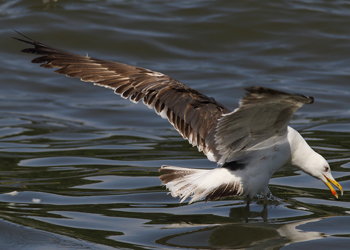 |
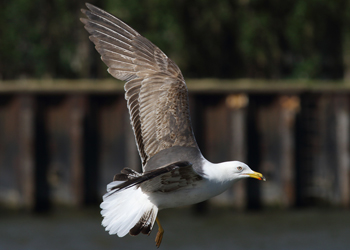 |
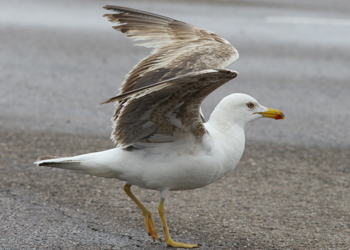 |
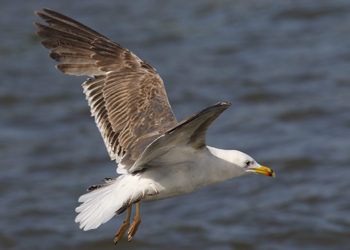 |
LBBG 3cy United Kingdom: graellsii
 Lesser Black-backed Gull graellsii 1CS9 3CY-4CY, June 2016 & June 2017, Matosinhos, Coimbra, Portugal. Picture: José Marques.
Lesser Black-backed Gull graellsii 1CS9 3CY-4CY, June 2016 & June 2017, Matosinhos, Coimbra, Portugal. Picture: José Marques. LBBG 3cy Belgium: graellsii
 Lesser Black-backed Gull graellsii TWAW 3cy June 16 2013, Noordwijk, the
Netherlands. Picture: Frank van der Meer & Ruud Altenburg.
Lesser Black-backed Gull graellsii TWAW 3cy June 16 2013, Noordwijk, the
Netherlands. Picture: Frank van der Meer & Ruud Altenburg. Lesser Black-backed Gull graellsii UKAB 3cy June 14 2014, Boulogne-sur-Mer, NW France. Picture: Jean-Michel Sauvage.
Lesser Black-backed Gull graellsii UKAB 3cy June 14 2014, Boulogne-sur-Mer, NW France. Picture: Jean-Michel Sauvage.
LBBG 3cy the Netherlands: graellsii / Dutch intergrade
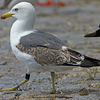 Lesser Black-backed Gull graellsii FV 3CY, June 18 2017, Utrecht, the Netherlands.
Lesser Black-backed Gull graellsii FV 3CY, June 18 2017, Utrecht, the Netherlands.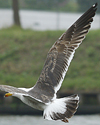 Lesser Black-backed Gull graellsii HR 3CY, June 29 2017, Utrecht, the Netherlands. With obvious mirror on P10.
Lesser Black-backed Gull graellsii HR 3CY, June 29 2017, Utrecht, the Netherlands. With obvious mirror on P10.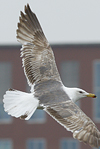 Lesser Black-backed Gull graellsii WW 3CY, June 29 2017, Utrecht, the Netherlands.
Lesser Black-backed Gull graellsii WW 3CY, June 29 2017, Utrecht, the Netherlands.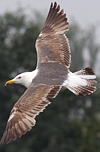 Lesser Black-backed Gull graellsii 0.+ 3CY, June & July 2016, Utrecht, the Netherlands.
Lesser Black-backed Gull graellsii 0.+ 3CY, June & July 2016, Utrecht, the Netherlands. 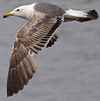 Lesser Black-backed Gull graellsii S.H 3CY, June
12 2016, Utrecht, the Netherlands.
Lesser Black-backed Gull graellsii S.H 3CY, June
12 2016, Utrecht, the Netherlands. 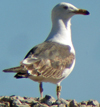 Lesser Black-backed Gull graellsii YK 3CY-4CY, June 2009 & August 2010, Barneveld, The Netherlands.
Lesser Black-backed Gull graellsii YK 3CY-4CY, June 2009 & August 2010, Barneveld, The Netherlands. Lesser Black-backed Gull graellsii S9 3CY, June 24 2009, Barneveld, the Netherlands.
Lesser Black-backed Gull graellsii S9 3CY, June 24 2009, Barneveld, the Netherlands.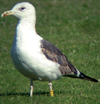 Lesser Black-backed Gull graellsii D0 3CY, June 10 2010, Utrecht, The Netherlands. Picture: Herman Bouman.
Lesser Black-backed Gull graellsii D0 3CY, June 10 2010, Utrecht, The Netherlands. Picture: Herman Bouman. Lesser Black-backed Gull graellsii 0* 3CY & 4CY, June 2013 & May 2014, Noordwijk & Maasvlakte, the Netherlands. Picture: Merijn Loeve & Mars Muusse.
Lesser Black-backed Gull graellsii 0* 3CY & 4CY, June 2013 & May 2014, Noordwijk & Maasvlakte, the Netherlands. Picture: Merijn Loeve & Mars Muusse. Classic 3cy LBBG, complete moult started.
 Lesser Black-backed Gull graellsii 6N 3cy, June 16 2013, Noordwijk, the
Netherlands. Picture: Ruud Altenburg.
Lesser Black-backed Gull graellsii 6N 3cy, June 16 2013, Noordwijk, the
Netherlands. Picture: Ruud Altenburg.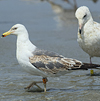 Lesser Black-backed Gull graellsii V+ 3cy, June 23 2013, Noordwijk, the
Netherlands. Picture: Maarten van Kleinwee.
Lesser Black-backed Gull graellsii V+ 3cy, June 23 2013, Noordwijk, the
Netherlands. Picture: Maarten van Kleinwee. Lesser Black-backed Gull graellsii Y2 3cy, June 16 2013, Noordwijk, the Netherlands.Picture: Frank van der Meer.
Lesser Black-backed Gull graellsii Y2 3cy, June 16 2013, Noordwijk, the Netherlands.Picture: Frank van der Meer. Lesser Black-backed Gull graellsii 13 3cy, June 16 2013, Noordwijk, the
Netherlands. Picture: Frank van der Meer.
Lesser Black-backed Gull graellsii 13 3cy, June 16 2013, Noordwijk, the
Netherlands. Picture: Frank van der Meer. Lesser Black-backed Gull graellsii 1C 3cy, June 16-22 2013, Noordwijk, the
Netherlands. Picture: Maarten van Kleinwee & Ruud Altenburg.
Lesser Black-backed Gull graellsii 1C 3cy, June 16-22 2013, Noordwijk, the
Netherlands. Picture: Maarten van Kleinwee & Ruud Altenburg. Lesser Black-backed Gull graellsii 1E 3cy, June 15 2013, Noordwijk, the
Netherlands. Picture: Maarten van Kleinwee.
Lesser Black-backed Gull graellsii 1E 3cy, June 15 2013, Noordwijk, the
Netherlands. Picture: Maarten van Kleinwee. Lesser Black-backed Gull graellsii 1Y 3cy, June 16 2013, Noordwijk, the
Netherlands. Picture: Ruud Altenburg.
Lesser Black-backed Gull graellsii 1Y 3cy, June 16 2013, Noordwijk, the
Netherlands. Picture: Ruud Altenburg.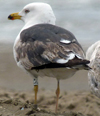 Lesser Black-backed Gull graellsii 27 3cy, June 16 2013, Noordwijk, the
Netherlands. Picture: Frank van der Meer.
Lesser Black-backed Gull graellsii 27 3cy, June 16 2013, Noordwijk, the
Netherlands. Picture: Frank van der Meer. Lesser Black-backed Gull graellsii 29 3cy, June 15 2013, Noordwijk, the
Netherlands. Picture: Maarten van Kleinwee.
Lesser Black-backed Gull graellsii 29 3cy, June 15 2013, Noordwijk, the
Netherlands. Picture: Maarten van Kleinwee. Lesser Black-backed Gull graellsii 3H 3cy, June 22 2013, Noordwijk, the
Netherlands. Picture: Maarten van Kleinwee.
Lesser Black-backed Gull graellsii 3H 3cy, June 22 2013, Noordwijk, the
Netherlands. Picture: Maarten van Kleinwee. Lesser Black-backed Gull graellsii 49 3cy, June 09 2013, Noordwijk, the
Netherlands. Classic 3cy LBBG, complete moult started.
Lesser Black-backed Gull graellsii 49 3cy, June 09 2013, Noordwijk, the
Netherlands. Classic 3cy LBBG, complete moult started.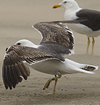 Lesser Black-backed Gull graellsii 6R 3cy, June 22 2013, Noordwijk, the
Netherlands. Picture: Maarten van Kleinwee.
Lesser Black-backed Gull graellsii 6R 3cy, June 22 2013, Noordwijk, the
Netherlands. Picture: Maarten van Kleinwee.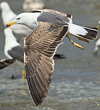 Lesser Black-backed Gull graellsii 6Y 3cy, June 22 2013, Noordwijk, the
Netherlands. Picture: Maarten van Kleinwee.
Lesser Black-backed Gull graellsii 6Y 3cy, June 22 2013, Noordwijk, the
Netherlands. Picture: Maarten van Kleinwee. Lesser Black-backed Gull graellsii KAKP 3cy, June 24 2013, Noordwijk, the
Lesser Black-backed Gull graellsii KAKP 3cy, June 24 2013, Noordwijk, the Netherlands.
Classic 3cy LBBG, complete moult started.
 Lesser Black-backed Gull graellsii KALF 3cy, June 16 2013, Noordwijk, the
Netherlands. Picture: Ruud Altenburg.
Lesser Black-backed Gull graellsii KALF 3cy, June 16 2013, Noordwijk, the
Netherlands. Picture: Ruud Altenburg. Lesser Black-backed Gull graellsii KAMU 3cy, April 24 2013 & June 16 2013, the Netherlands. Picture Herman Bouman & Ruud Altenburg.
Lesser Black-backed Gull graellsii KAMU 3cy, April 24 2013 & June 16 2013, the Netherlands. Picture Herman Bouman & Ruud Altenburg. Lesser Black-backed Gull graellsii YAWA 3cy, June 15-16 2013, Noordwijk, the
Netherlands. Picture: Maarten van Kleinwee & Ruud Altenburg.
Lesser Black-backed Gull graellsii YAWA 3cy, June 15-16 2013, Noordwijk, the
Netherlands. Picture: Maarten van Kleinwee & Ruud Altenburg. Lesser Black-backed Gull graellsii YAWA 3cy, June 15-16 2013, Noordwijk, the
Netherlands. Picture: Maarten van Kleinwee & Ruud Altenburg.
Lesser Black-backed Gull graellsii YAWA 3cy, June 15-16 2013, Noordwijk, the
Netherlands. Picture: Maarten van Kleinwee & Ruud Altenburg. Lesser Black-backed Gull graellsii YAWC 3cy, June 22 2013, Noordwijk, the
Netherlands. Picture: Maarten van Kleinwee.
Lesser Black-backed Gull graellsii YAWC 3cy, June 22 2013, Noordwijk, the
Netherlands. Picture: Maarten van Kleinwee. Lesser Black-backed Gull graellsii YAWS 3cy, June 22 2013, Noordwijk, the
Netherlands. Picture: Maarten van Kleinwee.
Lesser Black-backed Gull graellsii YAWS 3cy, June 22 2013, Noordwijk, the
Netherlands. Picture: Maarten van Kleinwee.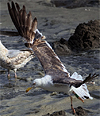 Lesser Black-backed Gull graellsii YAWZ 3cy, June 16-22 2013, Noordwijk, the
Netherlands. Picture: Ruud Altenburg & Maarten van Kleinwee.
Lesser Black-backed Gull graellsii YAWZ 3cy, June 16-22 2013, Noordwijk, the
Netherlands. Picture: Ruud Altenburg & Maarten van Kleinwee.Tail and several secondaries replaced at winter grounds.
 Lesser Black-backed Gull graellsii YAXS 3cy, June 24 2013, Noordwijk, the
Lesser Black-backed Gull graellsii YAXS 3cy, June 24 2013, Noordwijk, the Netherlands.
Classic 3cy LBBG, complete moult started.
 Lesser Black-backed Gull graellsii Y.AZP 3CY & 6CY, June 2013 & September 2016, the Netherlands & Portugal. Picture: Mars Muusse & José Marques.
Lesser Black-backed Gull graellsii Y.AZP 3CY & 6CY, June 2013 & September 2016, the Netherlands & Portugal. Picture: Mars Muusse & José Marques. Lesser Black-backed Gull graellsii Y.BXS 3CY, June 18 2017, Utrecht, the Netherlands.
Lesser Black-backed Gull graellsii Y.BXS 3CY, June 18 2017, Utrecht, the Netherlands. Lesser Black-backed Gull graellsii C00 3cy, June 18 2005, Amsterdam, the Netherlands. Picture Ruud
Altenburg.
Lesser Black-backed Gull graellsii C00 3cy, June 18 2005, Amsterdam, the Netherlands. Picture Ruud
Altenburg. Lesser Black-backed Gull graellsii C73 3cy, June 18 2005, Amsterdam, the Netherlands. Picture Ruud
Altenburg.
Lesser Black-backed Gull graellsii C73 3cy, June 18 2005, Amsterdam, the Netherlands. Picture Ruud
Altenburg. Lesser Black-backed Gull graellsii NLA 5.412.031 3cy, June 12 2005, Amsterdam, the Netherlands. Picture Ruud
Altenburg.
Lesser Black-backed Gull graellsii NLA 5.412.031 3cy, June 12 2005, Amsterdam, the Netherlands. Picture Ruud
Altenburg. Lesser Black-backed Gull graellsii NLA 5.412.031 3cy, June 12 2005, Amsterdam, the Netherlands. Picture Ruud
Altenburg.
Lesser Black-backed Gull graellsii NLA 5.412.031 3cy, June 12 2005, Amsterdam, the Netherlands. Picture Ruud
Altenburg. Lesser Black-backed Gull graellsii NLA 5.412.128 3cy, June 25 2005, Amsterdam, the Netherlands. Picture Ruud
Altenburg.
Lesser Black-backed Gull graellsii NLA 5.412.128 3cy, June 25 2005, Amsterdam, the Netherlands. Picture Ruud
Altenburg. Lesser Black-backed Gull graellsii NLA 5.412.152 3cy, June 12 2005, Amsterdam, the Netherlands. Picture Ruud
Altenburg.
Lesser Black-backed Gull graellsii NLA 5.412.152 3cy, June 12 2005, Amsterdam, the Netherlands. Picture Ruud
Altenburg.
 Lesser Black-backed Gull graellsii NLA 5.414.319 3cy, June 05 2006, Amsterdam, the Netherlands. Picture Ruud Altenburg.
Lesser Black-backed Gull graellsii NLA 5.414.319 3cy, June 05 2006, Amsterdam, the Netherlands. Picture Ruud Altenburg. Lesser Black-backed Gull graellsii NLA 5.504.995 3CY, June
12 2016, Utrecht, the Netherlands.
Lesser Black-backed Gull graellsii NLA 5.504.995 3CY, June
12 2016, Utrecht, the Netherlands.  Lesser Black-backed Gull graellsii NLA 5.05.80x 3CY, June
12 2016, Utrecht, the Netherlands.
Lesser Black-backed Gull graellsii NLA 5.05.80x 3CY, June
12 2016, Utrecht, the Netherlands. 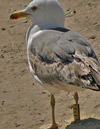 Lesser Black-backed Gull graellsii E 3cy, June 06 2006, Amsterdam, the Netherlands. Picture Ruud Altenburg.
Lesser Black-backed Gull graellsii E 3cy, June 06 2006, Amsterdam, the Netherlands. Picture Ruud Altenburg.
LBBG 3cy Germany: graellsii-intermedius transition
 Lesser Black-backed Gull graellsii H018 3CY, June 23 2009, Utrecht, The Netherlands. Picture: Herman Bouman.
Lesser Black-backed Gull graellsii H018 3CY, June 23 2009, Utrecht, The Netherlands. Picture: Herman Bouman.
 Lesser Black-backed Gull graellsii H501 3CY, Leiden, the Netherlands. Pictures: Maarten van Kleinwee.
Lesser Black-backed Gull graellsii H501 3CY, Leiden, the Netherlands. Pictures: Maarten van Kleinwee.Recorded as 3cy and 4cy.
 Lesser Black-backed Gull graellsii HN46 3CY, June 09 2013, Noordwijk, the
Netherlands.
Lesser Black-backed Gull graellsii HN46 3CY, June 09 2013, Noordwijk, the
Netherlands. Classic 3cy LBBG, complete moult started.
LBBG 3cy Norway: intermedius
 Lesser Black-backed Gull intermedius J0K0 1CY-6CY, August 2008 - May 2013, Norway - Denmark - Spain - Morocco - the Netherlands.
Lesser Black-backed Gull intermedius J0K0 1CY-6CY, August 2008 - May 2013, Norway - Denmark - Spain - Morocco - the Netherlands. Showing arrested moult in 3CY after an extraordinary extensive moult at the wintering grounds in Morocco.
 Lesser Black-backed Gull intermedius JJ1A 3cy, June 24 2013, Noordwijk, the
Lesser Black-backed Gull intermedius JJ1A 3cy, June 24 2013, Noordwijk, the Netherlands.
Classic 3cy LBBG, complete moult started.
 Lesser Black-backed Gull intermedius JJ5H 3cy, June 16 2013, Noordwijk, the
Lesser Black-backed Gull intermedius JJ5H 3cy, June 16 2013, Noordwijk, the Netherlands. Picture: Ruud Altenburg.
 Lesser Black-backed Gull intermedius J1E7 3cy, June 24 2003, IJmuiden, the Netherlands.
Lesser Black-backed Gull intermedius J1E7 3cy, June 24 2003, IJmuiden, the Netherlands.
LBBG 3cy Spain: unknown - ringed in winter
 Lesser Black-backed Gull N04U 3cy, June 16 2013, Noordwijk, the
Netherlands.Picture: Frank van der Meer & Ruud Altenburg.
Lesser Black-backed Gull N04U 3cy, June 16 2013, Noordwijk, the
Netherlands.Picture: Frank van der Meer & Ruud Altenburg.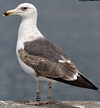 Lesser Black-backed Gull graellsii F986 3CY, June 01 2017, Matosinhos beach, Matosinhos, Portugal. Picture: José Marques.
Lesser Black-backed Gull graellsii F986 3CY, June 01 2017, Matosinhos beach, Matosinhos, Portugal. Picture: José Marques.
flying LBBG: 3cy graellsii type birds.
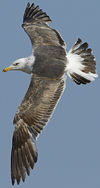 Lesser Black-backed Gull 3CY, June
19 2017, Katwijk, the Netherlands.
Lesser Black-backed Gull 3CY, June
19 2017, Katwijk, the Netherlands.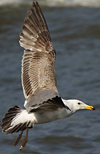 Lesser Black-backed Gull 3cy, June 10 2016, Utrecht, the Netherlands.
Lesser Black-backed Gull 3cy, June 10 2016, Utrecht, the Netherlands. Graellsii type with 2nd gen flight feathers.
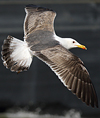 Lesser Black-backed Gull 3cy, June 10 2016, Utrecht, the Netherlands.
Lesser Black-backed Gull 3cy, June 10 2016, Utrecht, the Netherlands. Graellsii type with 2nd gen flight feathers.
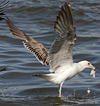 Lesser Black-backed Gull 3cy, June 10 2016, Utrecht, the Netherlands.
Lesser Black-backed Gull 3cy, June 10 2016, Utrecht, the Netherlands. Mirror on 2nd gen P10.
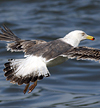 Lesser Black-backed Gull 3cy, June 10 2016, Utrecht, the Netherlands.
Lesser Black-backed Gull 3cy, June 10 2016, Utrecht, the Netherlands. Lesser Black-backed Gull 3cy, June 10 2016, Utrecht, the Netherlands.
Lesser Black-backed Gull 3cy, June 10 2016, Utrecht, the Netherlands. Graellsii type with 2nd gen flight feathers.
 Lesser Black-backed Gull 3cy, June 09 2013, Noordwijk, the Netherlands.
Lesser Black-backed Gull 3cy, June 09 2013, Noordwijk, the Netherlands. Classic 3cy LBBG with 2nd generation flight feathers.
 Lesser Black-backed Gull 3cy, June 24 2013, Noordwijk, the
Netherlands.
Lesser Black-backed Gull 3cy, June 24 2013, Noordwijk, the
Netherlands.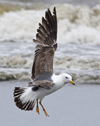 Lesser Black-backed Gull 3cy, June 10 2013, Noordwijk, the Netherlands.
Lesser Black-backed Gull 3cy, June 10 2013, Noordwijk, the Netherlands.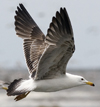 Lesser Black-backed Gull 3cy, June 10 2013, Noordwijk, the Netherlands.
Lesser Black-backed Gull 3cy, June 10 2013, Noordwijk, the Netherlands.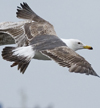 Lesser Black-backed Gull 3cy, June 10 2013, Noordwijk, the Netherlands.
Lesser Black-backed Gull 3cy, June 10 2013, Noordwijk, the Netherlands. Lesser Black-backed Gull 3cy, June 24 2013, Noordwijk, the
Netherlands.
Lesser Black-backed Gull 3cy, June 24 2013, Noordwijk, the
Netherlands. Lesser Black-backed Gull 3cy, June 10 2013, Noordwijk, the Netherlands.
Lesser Black-backed Gull 3cy, June 10 2013, Noordwijk, the Netherlands. Lesser Black-backed Gull 3cy, June 10 2013, Noordwijk, the Netherlands.
Lesser Black-backed Gull 3cy, June 10 2013, Noordwijk, the Netherlands. Lesser Black-backed Gull 3cy, June 10 2013, Noordwijk, the Netherlands.
Lesser Black-backed Gull 3cy, June 10 2013, Noordwijk, the Netherlands. Lesser Black-backed Gull 3cy, June 09 2013, Noordwijk, the Netherlands.
Lesser Black-backed Gull 3cy, June 09 2013, Noordwijk, the Netherlands. Classic 3cy LBBG, complete moult started.
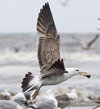 Lesser Black-backed Gull 3cy, June 10 2013, Noordwijk, the Netherlands.
Lesser Black-backed Gull 3cy, June 10 2013, Noordwijk, the Netherlands. Lesser Black-backed Gull 3cy, June 10 2013, Noordwijk, the Netherlands.
Lesser Black-backed Gull 3cy, June 10 2013, Noordwijk, the Netherlands. Lesser Black-backed Gull 3cy, June 10 2013, Noordwijk, the Netherlands.
Lesser Black-backed Gull 3cy, June 10 2013, Noordwijk, the Netherlands.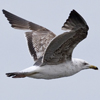 Lesser Black-backed Gull 3cy, June 10 2013, Noordwijk, the Netherlands.
Lesser Black-backed Gull 3cy, June 10 2013, Noordwijk, the Netherlands.
 Lesser Black-backed Gull 3cy, June 10 2013, Noordwijk, the Netherlands.
Lesser Black-backed Gull 3cy, June 10 2013, Noordwijk, the Netherlands.
 Lesser Black-backed Gull 3cy, June 10 2013, Noordwijk, the Netherlands.
Lesser Black-backed Gull 3cy, June 10 2013, Noordwijk, the Netherlands. Lesser Black-backed Gull 3cy, June 24 2013, Noordwijk, the
Netherlands.
Lesser Black-backed Gull 3cy, June 24 2013, Noordwijk, the
Netherlands.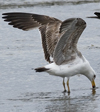 Lesser Black-backed Gull 3cy, June 10 2013, Noordwijk, the Netherlands.
Lesser Black-backed Gull 3cy, June 10 2013, Noordwijk, the Netherlands. Lesser Black-backed Gull 3cy, June 09 2013, Noordwijk, the Netherlands.
Lesser Black-backed Gull 3cy, June 09 2013, Noordwijk, the Netherlands. Classic 3cy LBBG, complete moult started.
 Lesser Black-backed Gull 3cy, June 10 2013, Noordwijk, the Netherlands.
Lesser Black-backed Gull 3cy, June 10 2013, Noordwijk, the Netherlands. Lesser Black-backed Gull 3cy, June 10 2013, Noordwijk, the Netherlands.
Lesser Black-backed Gull 3cy, June 10 2013, Noordwijk, the Netherlands. Lesser Black-backed Gull 3cy, June 10 2013, Noordwijk, the Netherlands.
Lesser Black-backed Gull 3cy, June 10 2013, Noordwijk, the Netherlands. Lesser Black-backed Gull 3cy, June 10 2013, Noordwijk, the Netherlands.
Lesser Black-backed Gull 3cy, June 10 2013, Noordwijk, the Netherlands. Lesser Black-backed Gull 3cy, June 10 2013, Noordwijk, the Netherlands.
Lesser Black-backed Gull 3cy, June 10 2013, Noordwijk, the Netherlands. Lesser Black-backed Gull 3cy, June 10 2013, Noordwijk, the Netherlands.
Lesser Black-backed Gull 3cy, June 10 2013, Noordwijk, the Netherlands. Lesser Black-backed Gull 3cy, June 10 2013, Noordwijk, the Netherlands.
Lesser Black-backed Gull 3cy, June 10 2013, Noordwijk, the Netherlands. Lesser Black-backed Gull 3cy, June 10 2013, Noordwijk, the Netherlands.
Lesser Black-backed Gull 3cy, June 10 2013, Noordwijk, the Netherlands. Lesser Black-backed Gull 3cy, June 10 2013, Noordwijk, the Netherlands.
Lesser Black-backed Gull 3cy, June 10 2013, Noordwijk, the Netherlands. Lesser Black-backed Gull 3cy, June 09 2013, Noordwijk, the Netherlands.
Lesser Black-backed Gull 3cy, June 09 2013, Noordwijk, the Netherlands. Classic 3cy LBBG, complete moult started.
 Lesser Black-backed Gull 3cy, June 10 2013, Noordwijk, the Netherlands.
Lesser Black-backed Gull 3cy, June 10 2013, Noordwijk, the Netherlands. Lesser Black-backed Gull 3cy, June 10 2013, Noordwijk, the Netherlands.
Lesser Black-backed Gull 3cy, June 10 2013, Noordwijk, the Netherlands. Lesser Black-backed Gull 3cy, June 24 2013, Noordwijk, the
Netherlands.
Lesser Black-backed Gull 3cy, June 24 2013, Noordwijk, the
Netherlands. Lesser Black-backed Gull 3cy, June 24 2013, Noordwijk, the
Netherlands.
Lesser Black-backed Gull 3cy, June 24 2013, Noordwijk, the
Netherlands. Lesser Black-backed Gull 3cy, June 24 2013, Noordwijk, the
Netherlands.
Lesser Black-backed Gull 3cy, June 24 2013, Noordwijk, the
Netherlands. Lesser Black-backed Gull 3cy, June 24 2013, Noordwijk, the
Netherlands.
Lesser Black-backed Gull 3cy, June 24 2013, Noordwijk, the
Netherlands. Lesser Black-backed Gull 3cy, June 24 2013, Noordwijk, the
Netherlands.
Lesser Black-backed Gull 3cy, June 24 2013, Noordwijk, the
Netherlands. Lesser Black-backed Gull 3cy, June 24 2013, Noordwijk, the
Netherlands.
Lesser Black-backed Gull 3cy, June 24 2013, Noordwijk, the
Netherlands. Lesser Black-backed Gull 3cy, June 24 2013, Noordwijk, the
Netherlands.
Lesser Black-backed Gull 3cy, June 24 2013, Noordwijk, the
Netherlands. Lesser Black-backed Gull 3cy,June 24 2013, Noordwijk, the
Netherlands.
Lesser Black-backed Gull 3cy,June 24 2013, Noordwijk, the
Netherlands. Lesser Black-backed Gull 3cy, June 24 2013, Noordwijk, the
Netherlands.
Lesser Black-backed Gull 3cy, June 24 2013, Noordwijk, the
Netherlands. Lesser Black-backed Gull 3cy, June 24 2013, Noordwijk, the
Netherlands.
Lesser Black-backed Gull 3cy, June 24 2013, Noordwijk, the
Netherlands. Lesser Black-backed Gull 3cy, June 24 2013, Noordwijk, the
Netherlands.
Lesser Black-backed Gull 3cy, June 24 2013, Noordwijk, the
Netherlands. Lesser Black-backed Gull 3cy, June 24 2013, Noordwijk, the
Netherlands.
Lesser Black-backed Gull 3cy, June 24 2013, Noordwijk, the
Netherlands. Lesser Black-backed Gull 3cy, June 24 2013, Noordwijk, the
Netherlands.
Lesser Black-backed Gull 3cy, June 24 2013, Noordwijk, the
Netherlands. Lesser Black-backed Gull 3cy, June 10 2013, Noordwijk, the Netherlands.
Lesser Black-backed Gull 3cy, June 10 2013, Noordwijk, the Netherlands.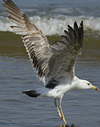 Lesser Black-backed Gull 3CY, June
19 2017, Katwijk, the Netherlands.
Lesser Black-backed Gull 3CY, June
19 2017, Katwijk, the Netherlands. Lesser Black-backed Gull 3CY, June
19 2017, Katwijk, the Netherlands.
Lesser Black-backed Gull 3CY, June
19 2017, Katwijk, the Netherlands. Lesser Black-backed Gull 3CY, June
19 2017, Katwijk, the Netherlands.
Lesser Black-backed Gull 3CY, June
19 2017, Katwijk, the Netherlands..
flying LBBG: 3cy birds with replaced tail-feathers.
.
 Lesser Black-backed Gull 3CY, June
19 2017, Katwijk, the Netherlands.
Lesser Black-backed Gull 3CY, June
19 2017, Katwijk, the Netherlands. Lesser Black-backed Gull 3cy, June 10 2016, Utrecht, the Netherlands.
Lesser Black-backed Gull 3cy, June 10 2016, Utrecht, the Netherlands. Lesser Black-backed Gull 3cy, June 10 2016, Utrecht, the Netherlands.
Lesser Black-backed Gull 3cy, June 10 2016, Utrecht, the Netherlands. Lesser Black-backed Gull 3cy, June 10 2016, Utrecht, the Netherlands.
Lesser Black-backed Gull 3cy, June 10 2016, Utrecht, the Netherlands. Lesser Black-backed Gull 3cy, June 10 2016, Utrecht, the Netherlands.
Lesser Black-backed Gull 3cy, June 10 2016, Utrecht, the Netherlands. Lesser Black-backed Gull NLA xxx 3CY, June 10 2016, Utrecht, the Netherlands.
Lesser Black-backed Gull NLA xxx 3CY, June 10 2016, Utrecht, the Netherlands. Lesser Black-backed Gull 3cy, June 10 2016, Utrecht, the Netherlands.
Lesser Black-backed Gull 3cy, June 10 2016, Utrecht, the Netherlands. Lesser Black-backed Gull 3cy, June 10 2016, Utrecht, the Netherlands.
Lesser Black-backed Gull 3cy, June 10 2016, Utrecht, the Netherlands. Lesser Black-backed Gull 3cy, June 10 2016, Utrecht, the Netherlands.
Lesser Black-backed Gull 3cy, June 10 2016, Utrecht, the Netherlands. Lesser Black-backed Gull 3cy, June 10 2016, Utrecht, the Netherlands.
Lesser Black-backed Gull 3cy, June 10 2016, Utrecht, the Netherlands. Lesser Black-backed Gull 3cy, June 10 2016, Utrecht, the Netherlands.
Lesser Black-backed Gull 3cy, June 10 2016, Utrecht, the Netherlands. Lesser Black-backed Gull 3cy, June 10 2016, Utrecht, the Netherlands.
Lesser Black-backed Gull 3cy, June 10 2016, Utrecht, the Netherlands. Lesser Black-backed Gull 3cy, June 10 2016, Utrecht, the Netherlands.
Lesser Black-backed Gull 3cy, June 10 2016, Utrecht, the Netherlands.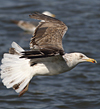 Lesser Black-backed Gull 3cy, June 10 2016, Utrecht, the Netherlands.
Lesser Black-backed Gull 3cy, June 10 2016, Utrecht, the Netherlands. Lesser Black-backed Gull 3cy, June 10 2016, Utrecht, the Netherlands.
Lesser Black-backed Gull 3cy, June 10 2016, Utrecht, the Netherlands. Lesser Black-backed Gull 3cy, June 10 2013, Noordwijk, the Netherlands.
Lesser Black-backed Gull 3cy, June 10 2013, Noordwijk, the Netherlands. Lesser Black-backed Gull 3cy, June 24 2013, Noordwijk, the
Netherlands.
Lesser Black-backed Gull 3cy, June 24 2013, Noordwijk, the
Netherlands. Lesser Black-backed Gull 3cy, June 24 2013, Noordwijk, the
Netherlands.
Lesser Black-backed Gull 3cy, June 24 2013, Noordwijk, the
Netherlands. Lesser Black-backed Gull 3cy, June 24 2013, Noordwijk, the
Netherlands.
Lesser Black-backed Gull 3cy, June 24 2013, Noordwijk, the
Netherlands. Lesser Black-backed Gull 3cy, June 10 2013, Noordwijk, the Netherlands.
Lesser Black-backed Gull 3cy, June 10 2013, Noordwijk, the Netherlands.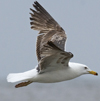 Lesser Black-backed Gull 3cy, June 10 2013, Noordwijk, the Netherlands.
Lesser Black-backed Gull 3cy, June 10 2013, Noordwijk, the Netherlands. Lesser Black-backed Gull 3cy, June 10 2013, Noordwijk, the Netherlands.
Lesser Black-backed Gull 3cy, June 10 2013, Noordwijk, the Netherlands. Lesser Black-backed Gull 3cy, June 10 2013, Noordwijk, the Netherlands.
Lesser Black-backed Gull 3cy, June 10 2013, Noordwijk, the Netherlands. Lesser Black-backed Gull 3cy, June 10 2013, Noordwijk, the Netherlands.
Lesser Black-backed Gull 3cy, June 10 2013, Noordwijk, the Netherlands. Lesser Black-backed Gull 3cy, June 10 2013, Noordwijk, the Netherlands.
Lesser Black-backed Gull 3cy, June 10 2013, Noordwijk, the Netherlands. Lesser Black-backed Gull 3cy, June 10 2013, Noordwijk, the Netherlands.
Lesser Black-backed Gull 3cy, June 10 2013, Noordwijk, the Netherlands. Lesser Black-backed Gull 3cy, June 10 2013, Noordwijk, the Netherlands.
Lesser Black-backed Gull 3cy, June 10 2013, Noordwijk, the Netherlands. Lesser Black-backed Gull 3cy, June 24 2013, Noordwijk, the
Netherlands.
Lesser Black-backed Gull 3cy, June 24 2013, Noordwijk, the
Netherlands. Lesser Black-backed Gull 3cy, June 24 2013, Noordwijk, the
Netherlands.
Lesser Black-backed Gull 3cy, June 24 2013, Noordwijk, the
Netherlands. Lesser Black-backed Gull 3cy, June 10 2013, Noordwijk, the Netherlands.
Lesser Black-backed Gull 3cy, June 10 2013, Noordwijk, the Netherlands. Lesser Black-backed Gull 3cy, June 24 2013, Noordwijk, the
Netherlands.
Lesser Black-backed Gull 3cy, June 24 2013, Noordwijk, the
Netherlands. Lesser Black-backed Gull 3cy, June 24 2013, Noordwijk, the
Netherlands.
Lesser Black-backed Gull 3cy, June 24 2013, Noordwijk, the
Netherlands. Lesser Black-backed Gull 3cy, June 24 2013, Noordwijk, the
Netherlands.
Lesser Black-backed Gull 3cy, June 24 2013, Noordwijk, the
Netherlands. Lesser Black-backed Gull 3cy, June 10 2013, Noordwijk, the Netherlands.
Lesser Black-backed Gull 3cy, June 10 2013, Noordwijk, the Netherlands.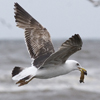 Lesser Black-backed Gull 3cy, June 10 2013, Noordwijk, the Netherlands.
Lesser Black-backed Gull 3cy, June 10 2013, Noordwijk, the Netherlands. Lesser Black-backed Gull 3cy, June 10 2013, Noordwijk, the Netherlands.
Lesser Black-backed Gull 3cy, June 10 2013, Noordwijk, the Netherlands. Lesser Black-backed Gull 3cy, June 24 2013, Noordwijk, the
Netherlands.
Lesser Black-backed Gull 3cy, June 24 2013, Noordwijk, the
Netherlands. Lesser Black-backed Gull 3cy, June 24 2013, Noordwijk, the
Netherlands.
Lesser Black-backed Gull 3cy, June 24 2013, Noordwijk, the
Netherlands. Lesser Black-backed Gull 3cy, June 10 2013, Noordwijk, the Netherlands.
Lesser Black-backed Gull 3cy, June 10 2013, Noordwijk, the Netherlands.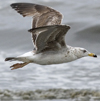 Lesser Black-backed Gull 3cy, June 10 2013, Noordwijk, the Netherlands.
Lesser Black-backed Gull 3cy, June 10 2013, Noordwijk, the Netherlands. Lesser Black-backed Gull 3cy, June 10 2013, Noordwijk, the Netherlands.
Lesser Black-backed Gull 3cy, June 10 2013, Noordwijk, the Netherlands. Lesser Black-backed Gull 3cy/sub-adult, June 10 2013, Noordwijk, the Netherlands.
Lesser Black-backed Gull 3cy/sub-adult, June 10 2013, Noordwijk, the Netherlands. Lesser Black-backed Gull 3cy, June 10 2013, Noordwijk, the Netherlands.
Lesser Black-backed Gull 3cy, June 10 2013, Noordwijk, the Netherlands. Lesser Black-backed Gull 3cy, June 10 2013, Noordwijk, the Netherlands.
Lesser Black-backed Gull 3cy, June 10 2013, Noordwijk, the Netherlands. Lesser Black-backed Gull 3cy, June 10 2013, Noordwijk, the Netherlands.
Lesser Black-backed Gull 3cy, June 10 2013, Noordwijk, the Netherlands. Lesser Black-backed Gull 3cy, June 10 2013, Noordwijk, the Netherlands.
Lesser Black-backed Gull 3cy, June 10 2013, Noordwijk, the Netherlands. Lesser Black-backed Gull 3cy, June 10 2013, Noordwijk, the Netherlands.
Lesser Black-backed Gull 3cy, June 10 2013, Noordwijk, the Netherlands. Lesser Black-backed Gull 3cy, June 10 2013, Noordwijk, the Netherlands.
Lesser Black-backed Gull 3cy, June 10 2013, Noordwijk, the Netherlands. Lesser Black-backed Gull 3cy, June 10 2013, Noordwijk, the Netherlands.
Lesser Black-backed Gull 3cy, June 10 2013, Noordwijk, the Netherlands. Lesser Black-backed Gull 3cy, June 10 2013, Noordwijk, the Netherlands.
Lesser Black-backed Gull 3cy, June 10 2013, Noordwijk, the Netherlands. Lesser Black-backed Gull 3cy, June 10 2013, Noordwijk, the Netherlands.
Lesser Black-backed Gull 3cy, June 10 2013, Noordwijk, the Netherlands. Lesser Black-backed Gull 3cy, June 10 2013, Noordwijk, the Netherlands.
Lesser Black-backed Gull 3cy, June 10 2013, Noordwijk, the Netherlands. Lesser Black-backed Gull 3cy, June 10 2013, Noordwijk, the Netherlands.
Lesser Black-backed Gull 3cy, June 10 2013, Noordwijk, the Netherlands. Lesser Black-backed Gull 3cy, June 10 2013, Noordwijk, the Netherlands.
Lesser Black-backed Gull 3cy, June 10 2013, Noordwijk, the Netherlands. Lesser Black-backed Gull 3cy, June 10 2013, Noordwijk, the Netherlands.
Lesser Black-backed Gull 3cy, June 10 2013, Noordwijk, the Netherlands. Lesser Black-backed Gull 3cy, June 24 2013, Noordwijk, the
Netherlands.
Lesser Black-backed Gull 3cy, June 24 2013, Noordwijk, the
Netherlands. Lesser Black-backed Gull 3cy, June 24 2013, Noordwijk, the
Netherlands.
Lesser Black-backed Gull 3cy, June 24 2013, Noordwijk, the
Netherlands. Lesser Black-backed Gull 3cy, June 24 2013, Noordwijk, the
Netherlands.
Lesser Black-backed Gull 3cy, June 24 2013, Noordwijk, the
Netherlands. Lesser Black-backed Gull 3cy, June 24 2013, Noordwijk, the
Netherlands.
Lesser Black-backed Gull 3cy, June 24 2013, Noordwijk, the
Netherlands. Lesser Black-backed Gull 3cy, June 24 2013, Noordwijk, the
Netherlands.
Lesser Black-backed Gull 3cy, June 24 2013, Noordwijk, the
Netherlands. Lesser Black-backed Gull 3cy, June 24 2013, Noordwijk, the
Netherlands.
Lesser Black-backed Gull 3cy, June 24 2013, Noordwijk, the
Netherlands. Lesser Black-backed Gull 3cy, June 09 2013, Noordwijk, the Netherlands.
Lesser Black-backed Gull 3cy, June 09 2013, Noordwijk, the Netherlands. Classic 3cy LBBG, complete moult not started.
flying LBBG:
3cy birds with replaced secondaries.
 Lesser Black-backed Gull 3cy, June 24 2013, Noordwijk, the
Netherlands.
Lesser Black-backed Gull 3cy, June 24 2013, Noordwijk, the
Netherlands. Lesser Black-backed Gull 3cy, June 10 2013, Noordwijk, the Netherlands.
Lesser Black-backed Gull 3cy, June 10 2013, Noordwijk, the Netherlands.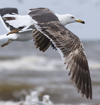 Lesser Black-backed Gull 3cy, June 10 2013, Noordwijk, the Netherlands.
Lesser Black-backed Gull 3cy, June 10 2013, Noordwijk, the Netherlands. Lesser Black-backed Gull 3cy, June 10 2013, Noordwijk, the Netherlands.
Lesser Black-backed Gull 3cy, June 10 2013, Noordwijk, the Netherlands. Lesser Black-backed Gull 3cy, June 10 2013, Noordwijk, the Netherlands.
Lesser Black-backed Gull 3cy, June 10 2013, Noordwijk, the Netherlands. Lesser Black-backed Gull 3cy, June 10 2013, Noordwijk, the Netherlands.
Lesser Black-backed Gull 3cy, June 10 2013, Noordwijk, the Netherlands. Lesser Black-backed Gull 3cy, June 10 2013, Noordwijk, the Netherlands.
Lesser Black-backed Gull 3cy, June 10 2013, Noordwijk, the Netherlands. Lesser Black-backed Gull 3cy, June 10 2013, Noordwijk, the Netherlands.
Lesser Black-backed Gull 3cy, June 10 2013, Noordwijk, the Netherlands. Lesser Black-backed Gull 3cy, June 10 2013, Noordwijk, the Netherlands.
Lesser Black-backed Gull 3cy, June 10 2013, Noordwijk, the Netherlands. Lesser Black-backed Gull 3cy, June 24 2013, Noordwijk, the
Netherlands.
Lesser Black-backed Gull 3cy, June 24 2013, Noordwijk, the
Netherlands.3CY LBBG
with arrested primary moult
 Lesser Black-backed Gull 3CY, June
19 2017, Katwijk, the Netherlands. Left wing: P1 missing, P2 3rd gen, P4 2nd gen, P5-P6 3rd gen, P7-P10 2nd gen. Complete moult: P1 missing.
Lesser Black-backed Gull 3CY, June
19 2017, Katwijk, the Netherlands. Left wing: P1 missing, P2 3rd gen, P4 2nd gen, P5-P6 3rd gen, P7-P10 2nd gen. Complete moult: P1 missing. Lesser Black-backed Gull 3CY, June
19 2017, Katwijk, the Netherlands. Arrested moult.
Lesser Black-backed Gull 3CY, June
19 2017, Katwijk, the Netherlands. Arrested moult.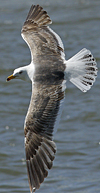 Lesser Black-backed Gull 3CY, June 01 2017, Utrecht, the Netherlands.
Lesser Black-backed Gull 3CY, June 01 2017, Utrecht, the Netherlands. P1-P2 missing in complete moult, P3-P9 fully grown 3rd gen, P10 growing 3rd gen.
 Lesser Black-backed Gull 3cy, June
20 2016, Katwijk, the Netherlands.
Lesser Black-backed Gull 3cy, June
20 2016, Katwijk, the Netherlands. P1-P6 3rd gen, P7-P10 2nd gen.
 Lesser Black-backed Gull 3CY, June 04 2016, Utrecht, the Netherlands.
Lesser Black-backed Gull 3CY, June 04 2016, Utrecht, the Netherlands.P1 growing, P2 missing, P3 3rd gen, P4 2nd gen, P5 3rd gen, P6-P10 2nd gen.
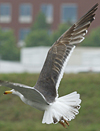 Lesser Black-backed Gull 3CY, June 29 2017, Utrecht, the Netherlands.
Lesser Black-backed Gull 3CY, June 29 2017, Utrecht, the Netherlands.
Right wing: P1-P2 missing, P3-P4 old 3rd gen, P5 old 2nd gen, P6 old 3rd gen, P7-P10 old 2nd gen.
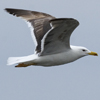 Lesser Black-backed Gull 3cy, June 10 2013, Noordwijk, the Netherlands.
Lesser Black-backed Gull 3cy, June 10 2013, Noordwijk, the Netherlands. Left wing: P5-P6 replaced. Right wing: P1?, P3-P5 replaced.
 Lesser Black-backed Gull 3cy, June 10 2013, Noordwijk, the Netherlands.
Lesser Black-backed Gull 3cy, June 10 2013, Noordwijk, the Netherlands. P1 replaced.
 Lesser Black-backed Gull 3cy, June 24 2013, Noordwijk, the
Netherlands.
Lesser Black-backed Gull 3cy, June 24 2013, Noordwijk, the
Netherlands. P5 replaced on winter grounds; complete moult started.
 Lesser Black-backed Gull 3cy, June 24 2013, Noordwijk, the
Lesser Black-backed Gull 3cy, June 24 2013, Noordwijk, the Netherlands. P4-P6 replaced on winter grounds; complete moult started.
 Lesser Black-backed Gull 3cy, June 24 2013, Noordwijk, the
Netherlands.
Lesser Black-backed Gull 3cy, June 24 2013, Noordwijk, the
Netherlands. P4 replaced on winter grounds; complete moult started.
 Lesser Black-backed Gull 3cy, June 09 2013, Noordwijk, the Netherlands. Advanced 3cy LBBG, arrested moult in primaries.
Lesser Black-backed Gull 3cy, June 09 2013, Noordwijk, the Netherlands. Advanced 3cy LBBG, arrested moult in primaries.  Lesser Black-backed Gull 3cy, June 09 2013, Noordwijk, the Netherlands.
Lesser Black-backed Gull 3cy, June 09 2013, Noordwijk, the Netherlands. Advanced 3cy LBBG, arrested moult in primaries.
 Lesser Black-backed Gull 3cy, June 09 2013, Noordwijk, the Netherlands.
Lesser Black-backed Gull 3cy, June 09 2013, Noordwijk, the Netherlands. Advanced 3cy LBBG, arrested moult in primaries.
 Lesser Black-backed Gull 3cy, June 09 2013, Noordwijk, the Netherlands.
Lesser Black-backed Gull 3cy, June 09 2013, Noordwijk, the Netherlands. Advanced 3cy LBBG, arrested moult in primaries.
 Lesser Black-backed Gull 3cy, June 24 2013, Noordwijk, the
Netherlands.
Lesser Black-backed Gull 3cy, June 24 2013, Noordwijk, the
Netherlands. Lesser Black-backed Gull 3cy, June 24 2013, Noordwijk, the
Netherlands.
Lesser Black-backed Gull 3cy, June 24 2013, Noordwijk, the
Netherlands. Lesser Black-backed Gull 3cy, June 10 2013, Noordwijk, the Netherlands.
Lesser Black-backed Gull 3cy, June 10 2013, Noordwijk, the Netherlands. Advanced 3cy LBBG, arrested moult in primaries.
 Lesser Black-backed Gull intermedius 3cy, June 28 2003, Dannes - Boulogne/Mer, NW FRance.
Lesser Black-backed Gull intermedius 3cy, June 28 2003, Dannes - Boulogne/Mer, NW FRance. P1 4th generation, P2-P3 missing, P4-P7 3rd generation, P8-P10 old 2nd generation.
Very advanced 2nd summer: almost all upper parts moulted and arrested moult in the primaries.
 Lesser Black-backed Gull 3cy, June 10 2013, Noordwijk, the Netherlands. Fuscus-type bird.
Lesser Black-backed Gull 3cy, June 10 2013, Noordwijk, the Netherlands. Fuscus-type bird. Lesser Black-backed Gull 3cy, June 23 2006, Amsterdeam, the Netherlands. Arrested moult in primaries.
Lesser Black-backed Gull 3cy, June 23 2006, Amsterdeam, the Netherlands. Arrested moult in primaries.  Lesser Black-backed Gull 3cy, June 09 2013, Noordwijk, the Netherlands. Advanced 3cy LBBG, arrested moult in primaries.
Lesser Black-backed Gull 3cy, June 09 2013, Noordwijk, the Netherlands. Advanced 3cy LBBG, arrested moult in primaries. 